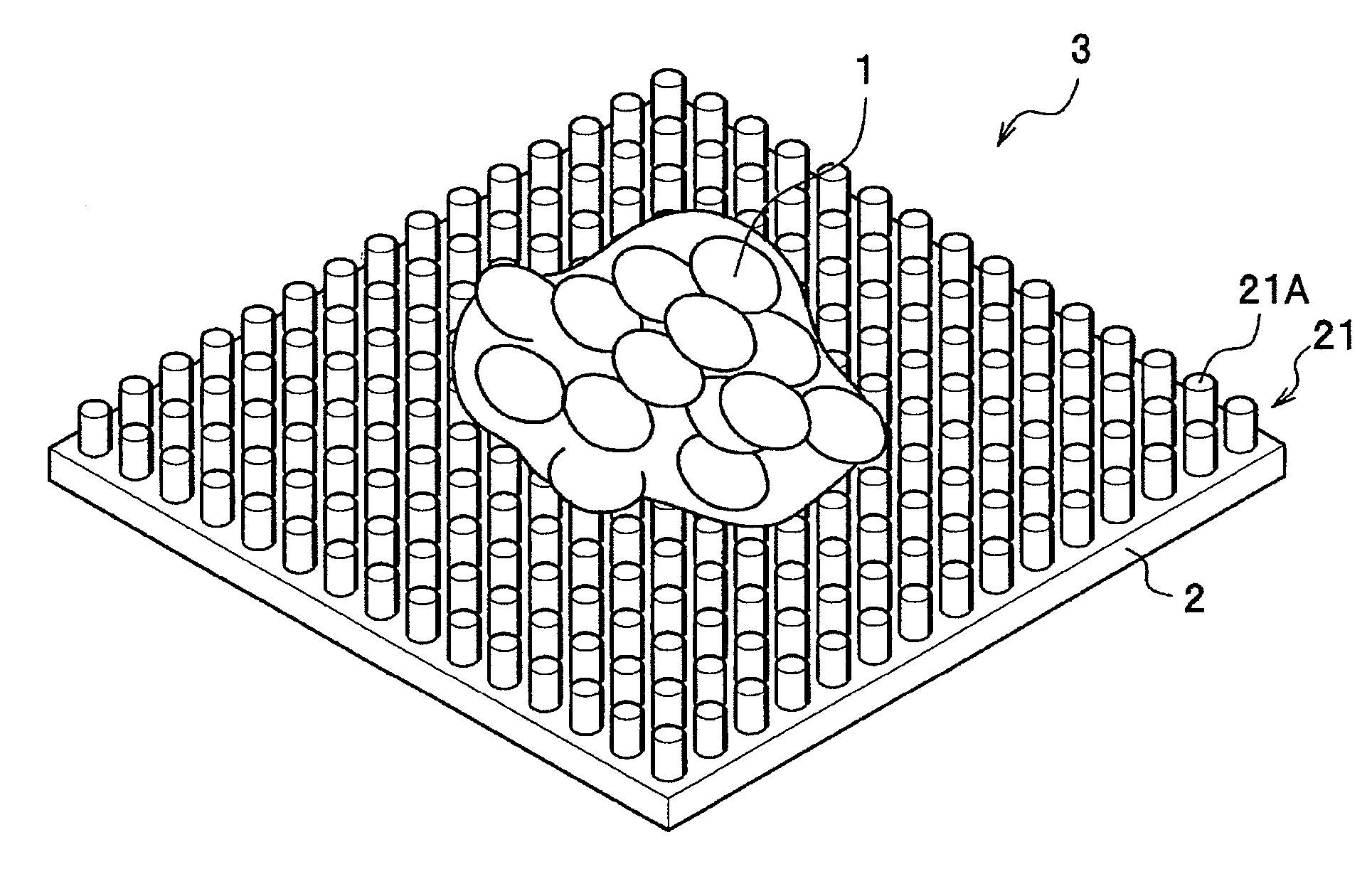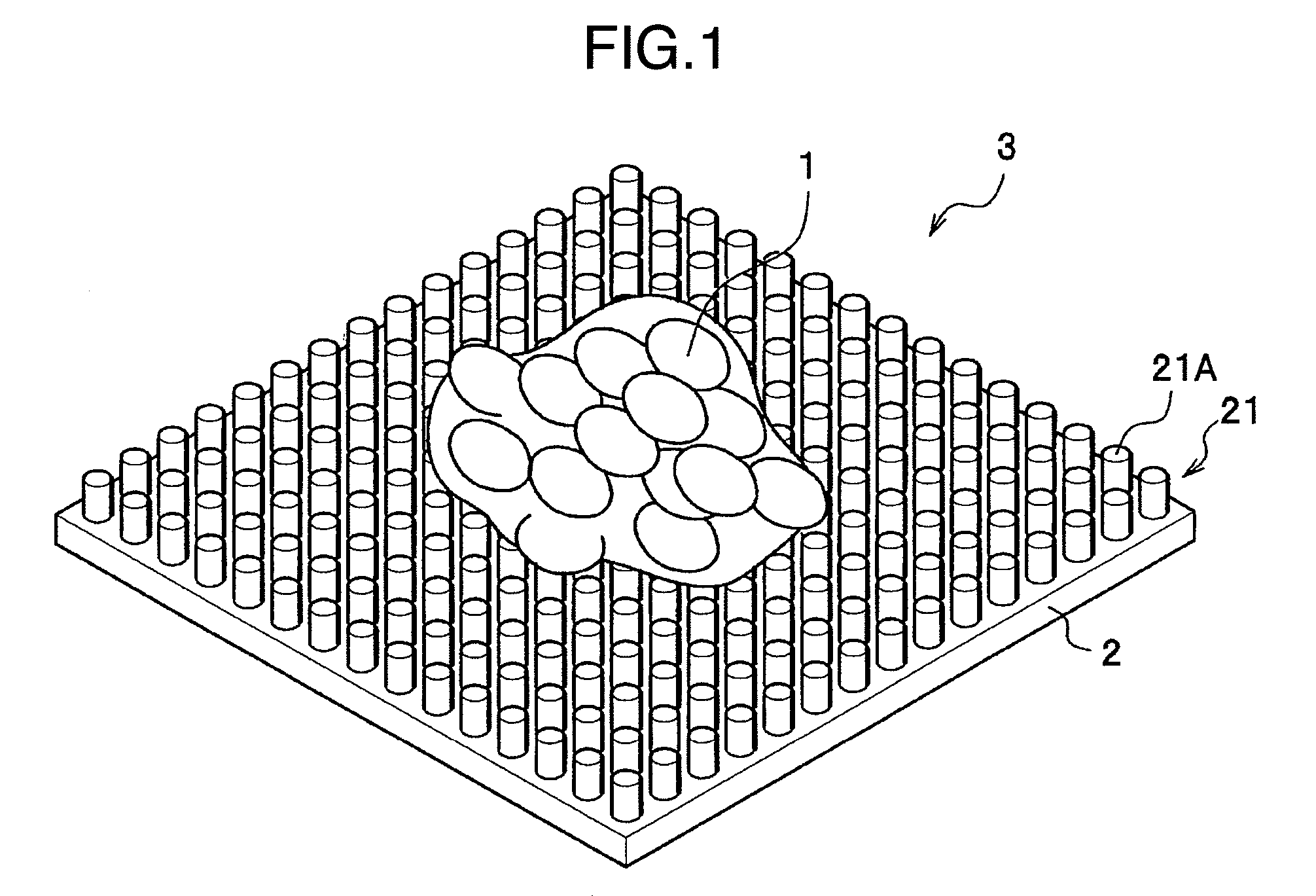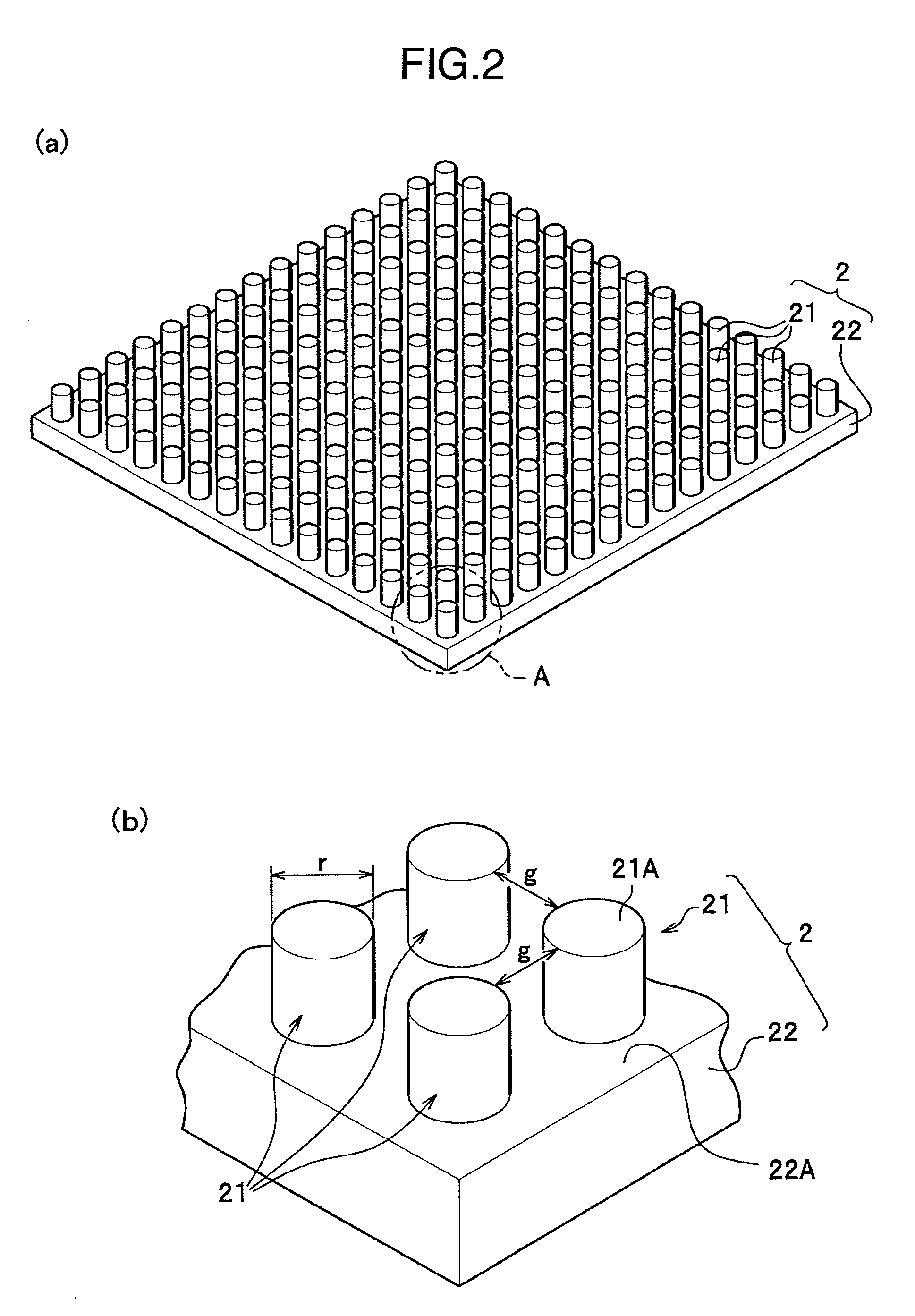Process and substrate for culturing cartilage cell, material for reproducing biological tissue containing cartilage cell, and cartilage cell
a technology of cartilage cells and substrates, applied in the direction of skeletal/connective tissue cells, prosthesis, drug compositions, etc., can solve the problems of weak self-repairing ability of cartilage tissue, natural repairing cannot be expected, and limited application of artificial joint replacement, one of representative treatments of cartilage tissue,
- Summary
- Abstract
- Description
- Claims
- Application Information
AI Technical Summary
Benefits of technology
Problems solved by technology
Method used
Image
Examples
example
[0099] More specific embodiments of the present invention will be explained by the following examples.
first example
The First Example
Preparation of Cartilage Cell Culturing Kit 8
[0100] The first example is an example of producing a cartilage cell culturing kit 8 in which a cartilage cell culturing substrate 2 having a plurality of projected portions 21 and a culture vessel 7 were monolithically formed (FIG. 4(b)).
[0101] The cartilage cell culturing kit 8 of the first example was produced by forming a plurality of projected portions 21 in the circular area of 25 mm in diameter of the upper surface of the bottom of culture vessel 7 in the form of Schale mainly composed of polystyrene and having a thickness of 2 mm. The polystyrene had a molecular weight of 2000-3,840,000. The upper limit of the molecular weight can be extended to 6,000,000.
[0102] The projected portions 21 were formed by thermal nanoimprinting method. A mold 5 having ruggedness (FIG. 3) was heated to 130° C. and pressed onto the culture vessel 7 under a pressing pressure of 4 MPa. The mold 5 was a circular silicon wafer having a c...
second example
The Second Example
Culturing of Bovine Articular Cartilage Cells
[0106] In the second example, bovine articular cartilage cells were cultured by the cartilage cell culturing kit 8 produced by the same method as in the first example, and the resulting cultured cartilage cells (cartilage cell clump) 1 were examined.
1>>
[0107] First, for preparing cartilage cells 1, a cartilage portion of bovine articulation was sliced at about 1 mm square, followed by washing with PBS. Then, the slice was put in a collagenase solution (0.2% collagenase DMEM solution containing amphotericin B (5 ml / 500 ml medium)), followed by stirring and shaking at 37° C. for 12-20 hours to decompose collagen. Cartilage cells were obtained by centrifugation (4° C., 1200 rpm, 5 minutes). Then, they were diluted by cell banker so as to obtain 3×107 cells / ml, and were cryopreserved.
[0108] Next, for culturing cartilage cells 1, freeze-thawed cartilage cells 1 were seeded on the culturing surface of three kinds of cartila...
PUM
| Property | Measurement | Unit |
|---|---|---|
| diameter | aaaaa | aaaaa |
| diameter | aaaaa | aaaaa |
| height | aaaaa | aaaaa |
Abstract
Description
Claims
Application Information
 Login to View More
Login to View More - R&D
- Intellectual Property
- Life Sciences
- Materials
- Tech Scout
- Unparalleled Data Quality
- Higher Quality Content
- 60% Fewer Hallucinations
Browse by: Latest US Patents, China's latest patents, Technical Efficacy Thesaurus, Application Domain, Technology Topic, Popular Technical Reports.
© 2025 PatSnap. All rights reserved.Legal|Privacy policy|Modern Slavery Act Transparency Statement|Sitemap|About US| Contact US: help@patsnap.com



